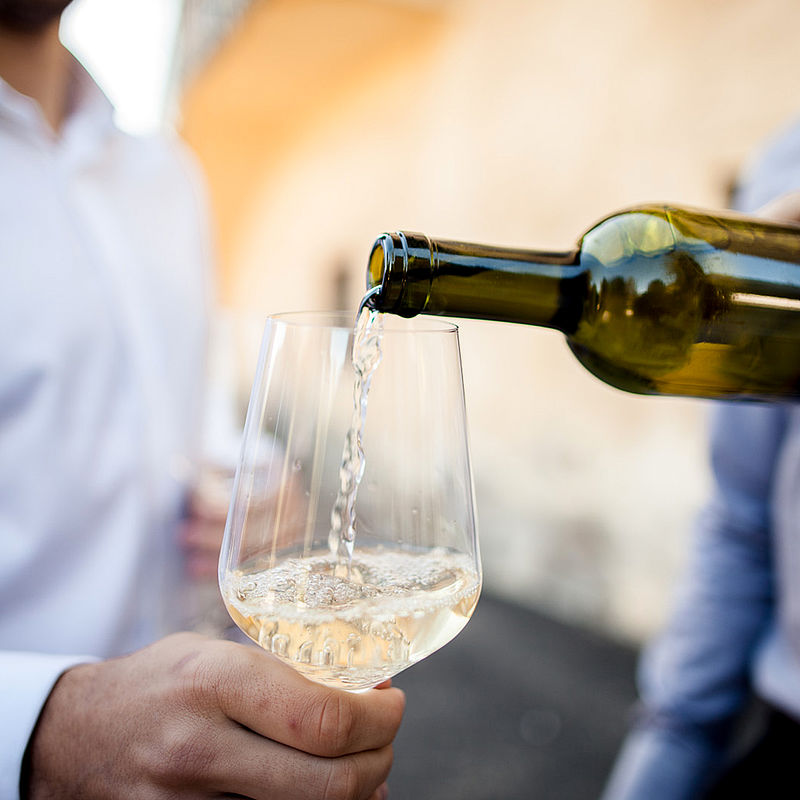You are using an outdated browser. To have the best experience use one of the following browsers:
Do school grades help us drink wine?



One can say that a wine has 15 out of 20 points.
Or that it demonstrates a character similar to that of Madonna, George Clooney, Naomi Campbell or Cristiano Ronaldo. Is this good, is this not good? Does evaluating a wine help us drink it? Here are a few suggestions on how you can evaluate a wine yourself. With patience, empathy and conviction VINUM Hotels Südtirol want to share a few tips with their guests on how to evaluate a wine.
In Germany, the 20-point system is often used in wine ratings, but the 100-point system has prevailed internationally. The two systems are pretty much the same, the rating range of the German system is around 10 to 20 points. However, the number "100" does somehow sound smarter, because it suggests that you can rate with more precision. But that's not quite true, because the 100 point system is set at 60, or often even at 70 points.
What was said about a wine when point systems hadn’t even been invented? Austrian oenology already had distinctive wine terms in the early 19th century, which are still of interest to us, because one immediately understands what is meant. Old Austrian wines were known as or called: aged (mature, ripe, developed), stale (flat, spoiled), old, effervescent (sparkling), disintegrated (ruined, decomposed), complete (completed fermentation), selected (from the best grapes), excellent, intoxicating, bitter, tingling (developing carbon dioxide), flowery, smelling of sulphur, lacking in bouquet, rich in bouquet, pungent, characterless (from mixed grape varieties without selection), concentrated, thick (from pithy grapes), glinting, volatile (rich in aroma, ether and alcohol), progressive (well-formed, artificial (oily), tannic (astringent, mouth-puckering), receding (wine that becomes noticeably dull after the disappearance of carbon dioxide), adulterated, rejuvenated (if a young wine is added to an old wine to raise its sunken vitality). With this old Austrian wine vocabulary tool we were still able to break down and describe any wine very well.
But if someone asks "How was the wine?", then we can answer in points: "17.5 points" and if a wine aficionado has already adopted the 20-point system, then he or she knows that 17.5 points is "excellent". The scale runs as follows: 10 – 11.9 = "acceptable", 12 – 13.9 = "good", 14 – 15.9 = "very good", 16 – 17.9 = "excellent" and 18 - 20 points = "great". And if one forgets the scale? Then dash all the points and let’s just talk about a good glass of wine as usual! After all, vocabulary used in the language of wine is simple: The first study of a wine is done with the eye. When pouring, fine bubbles in the shape of a "star" form on the surface of the wine or on the edge of the glass, this is a sign of a sparkling, racy wine. After the eye, the nose is the most important sensory organ when tasting a wine. The sensation of smell arises from the fact that when pouring a wine, the bouquet, fragrances and aromas combine with oxygen and penetrate the air up into the nose.
Just as there is a language for love, there is indeed a language for wine. To ensure everyone holding a glass of wine is speaking the same language, experienced sommeliers at VINUM-Hotels Südtirol are willingly to help out as "wine interpreters"!




